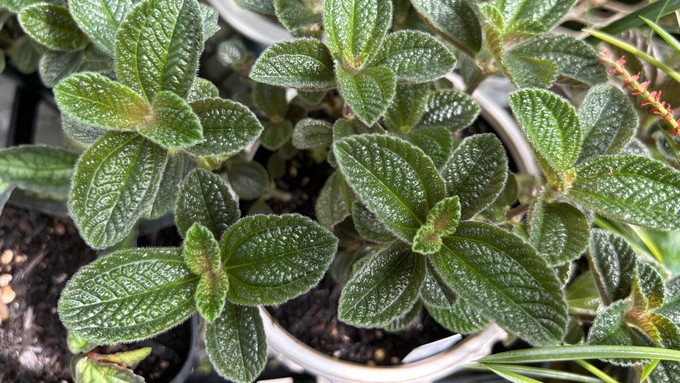
Elk Grove Garden Club, Burbank High events Saturday

Pilea 'Chocolate Soldier' plants will be among the houseplants (and many others) available Saturday at the Elk Grove Garden Club's sale. These pileas sport pink and chartreuse flowers when they start blooming. Kathy Morrison
The Sacramento region's plant sale season hits its peak in April. Two fundraising sales coming this Saturday, April 6, fall under the category of "If you know, you know." And plant bargains are guaranteed.
Starting at 8 a.m., the Elk Grove Garden Club's spring plant sale will have an inventory that benefits from the propagation expertise of many of its members. Think succulents, houseplants, vegetables, perennials, annuals and, they promise, "unusual plants." Garden crafts also will be sold.
Looking for your summer tomatoes? Varieties at this sale will include Berkeley Tie Dye, Carbon, Medium Rare, Ace 55 VF, San Marzano, Rutgers, and two popular cherry tomatoes, Super Sweet 100 and Sun Gold.
The sale takes place at a member's home, 8609 Brodie Ct., Elk Grove, east of Highway 99, a few blocks north of Elk Grove Boulevard. The sale runs until 1 p.m. Cash or check only accepted.
Meanwhile, up the road in Sacramento, from 9 a.m. to 1 p.m., the Burbank Urban Garden (BUG) will hold its spring plant sale. The plants all are raised by students in the Luther Burbank High School Urban Agriculture Academy.
The inventory will include veggie starts such as tomatoes, onions, peas, peppers, cucumber, melons, pumpkins and squash, plus herbs, and flowers including zinnias, cosmos and marigolds. The full inventory is available on the garden's Facebook page, https://www.facebook.com/BurbankUrbanGarden
Burbank High is located at 3500 Florin Road, west of Highway 99 in Sacramento. The BUG is in the back of the school property, off Luther Drive.
Comments
0 comments have been posted.Sacramento Digs Gardening to your inbox.
Sites We Like
Garden Checklist for week of July 21
Your garden needs you!
* Keep your vegetable garden watered, mulched and weeded. Water before 8 a.m. to reduce the chance of fungal infection and to conserve moisture.
* Feed vegetable plants bone meal, rock phosphate or other fertilizers high in phosphate to stimulate more blooms and fruiting. (But wait until daily high temperatures drop out of the 100s.)
* Don’t let tomatoes wilt or dry out completely. Give tomatoes a deep watering two to three times a week.
* Harvest vegetables promptly to encourage plants to produce more. Squash especially tends to grow rapidly in hot weather. Keep an eye on zucchini.
* Pinch back chrysanthemums for bushy plants and more flowers in September.
* Remove spent flowers from roses, daylilies and other bloomers as they finish flowering.
* Pinch off blooms from basil so the plant will grow more leaves.
* Cut back lavender after flowering to promote a second bloom.
* It's not too late to add a splash of color. Plant petunias, snapdragons, zinnias and marigolds.
* From seed, plant corn, pumpkins, radishes, winter squash and sunflowers.